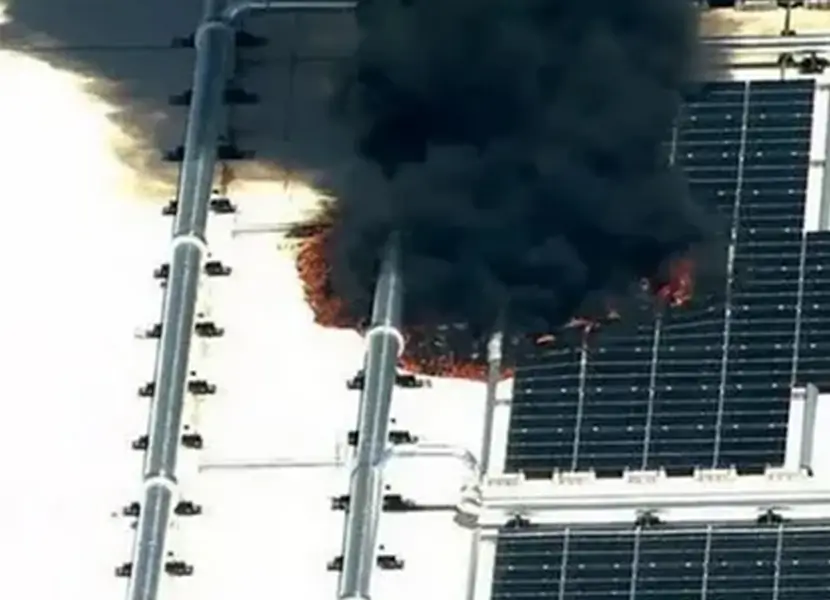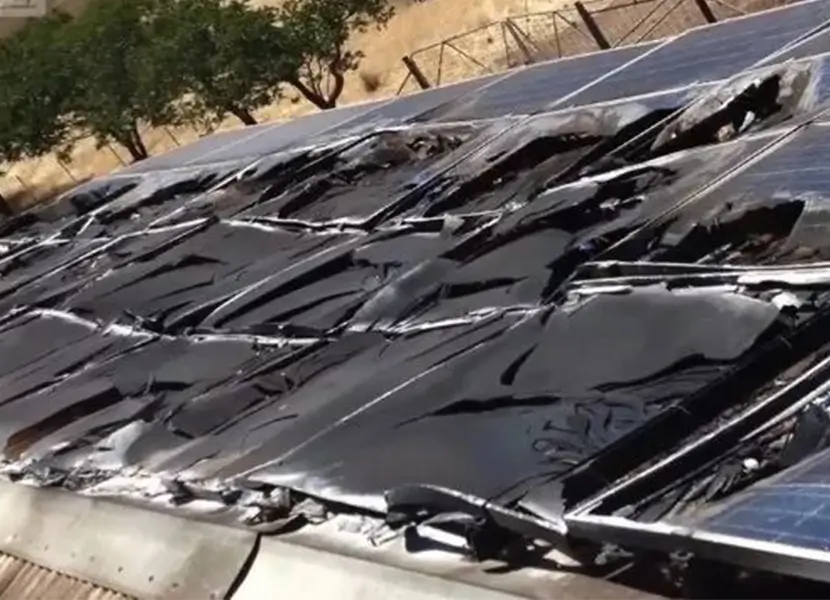Introduction
A
s the penetration rate of distributed photovoltaics increases at home and abroad, fire safety has become the focus of market attention.
Part of the energy generated by illuminated solar cells may be consumed by shaded cells. The consequence of the hot spot effect is that the product of local current and voltage of solar cell modules increases, thus causing a local temperature rise on these cell modules. , causing the component to spontaneously ignite.
According to relevant studies, 40% of fires in photovoltaic power stations are caused by DC arcs. Therefore, the call for rapid shutdown is getting louder and louder.






Global Rapid Shutdown (RSD) regulations and fire safety related regulations
United States: 2017/2020 NEC Section 690.12(B) Rapid Shutdown of Photovoltaic Systems on Buildings UL1741 Requirements for Photovoltaic Rapid Shutdown Equipment and Systems.
Canada: 2021 Canadian Electrical Code – Exception to Photovoltaic Rapid Shutdown to Section 64-218(4)(b).
Mexico: NOM-00-SEDE-2012 Electrical Installation and Use Considerations.
Italy: CEI82-25 V2:2012 Guidelines for the design, installation and operation of photovoltaic power generation systems UNI9177:2008 Fire protection response.
Germany: VDE-AR-E2100-712 Specific fire protection.
Thailand: Thailand Electrical Code: Solar Rooftop Power Supply Installation 2022.
Poland: Photovoltaic systems with a capacity greater than 6.5 kilowatts need to install a DC rapid shutdown device.
China: CTS 13001-2018 When the DC voltage is higher than 120 volts, individual solar panels or battery strings should shut down quickly.
Australia: OVE R11-1: 2013 specification requires disconnection near the power source.
Australia/New Zealand: AS/NZS5033:2014 Regulations for grid-connected photovoltaic systems.
What are the general requirements for rapid shutdown of solar modules?


The concept of photovoltaic rapid shutdown was first proposed by the National Electrical Code (NEC) in the United States. After many updates, it has formed the mandatory standard “NEC690.12“.
Key terms include:
1.The photovoltaic system must have a “photovoltaic hazard control system” to keep the photovoltaic system in a controllable state in critical situations.
2.Within 30 seconds after the “photovoltaic hazard control system” is started, the voltage outside the limit range drops below 30V, and the voltage within the limit range drops below 80V.
Why is fast shutdown required?
Because it is easy for photovoltaic power stations to catch fire, it is difficult to rescue them.
Problems such as hot spots on photovoltaic system components, string mismatch, damaged cables, and dust accumulation in the inverter can easily cause fires. Simply turning off the inverter will not eliminate the hundreds or even thousands of volts of DC voltage between the modules and between the modules and the inverter.
If firefighters rush to rescue, life will be endangered. Quick shutdown can cut off the current between components and between components and the inverter, ensuring a safe rescue environment, reducing fire losses, and ensuring the safety of people and property.
The built-in fast shutdown function of the solar optimizer enhances the safety of the solar system
1.Panel-level MPPT tracking
2.Panel level temperature 3.current-voltage diagnostics
4.Local and remote fast shutdown
5.Photovoltaic safety is a mandatory standard in most countries
6.Fast shutdown and PV optimizer DC connection
7.Complies with NEC 2020 photovoltaic safety standards
8.If temperature abnormality is detected, automatic start-up and quick break can be realized
9.Avoid component hot spots and fire (expansion) issues
10.Reduce operation and maintenance costs
Intelligent quick break principle description


Test data shows:
1.In the absence of shading, only installing a smart switch can ensure the safety of the entire photovoltaic system.
2.The strings are shaded and fully equipped with optimizers. V.S. The strings are shaded and not equipped with optimizers. The power recovered is 5%~30%.
3.The strings have fully shaded optimizers. V.S. strings have mixed shaded optimizers and smart shutdown collectors. The difference in power recovery is large and the recycling cycles are different.
How to deploy photovoltaic power plants?
1.Comprehensive deployment plan for optimizer shutdown system:


1.Deployment method: It consists of optimizer, gateway, IOT platform, micro-inverter and other components, that is, the optimizer is fully deployed for the shading MPPT (the optimizer itself contains a smart shutdown function). The optimizer communicates through the gateway to complete functions such as monitoring, optimization, and shutdown.
2.Advantages and Disadvantages: All optimizers are connected in series to achieve all component-level power improvement optimization and safe shutdown. This deployment method can greatly reduce the loss of string power generation caused by shading, while ensuring component-level monitoring and safety.
2.Comprehensive deployment of monitoring-level intelligent shutdown system:


1.Deployment method: This solution consists of intelligent shutdown devices, micro-inverters, gateways, IOT platforms and other components. All non-shaded components are equipped with intelligent shutdown collectors. The intelligent shutdown device communicates through the gateway to complete functions such as monitoring (data collection and data analysis) and shutdown.
2.Advantages and Disadvantages: For unshaded strings, intelligent shutdown devices are fully deployed, which can realize monitoring and shutdown functions at all component levels to ensure the safety of photovoltaic power stations.
3.Hybrid deployment of monitoring-grade intelligent shutdown system:


1.Deployment method: This solution consists of intelligent shutdown, optimizer, micro-inverter, gateway, IOT platform and other components. Only shading components are equipped with optimizers, and non-shading components are equipped with intelligent shutdown collectors. The intelligent shutdown device communicates through the gateway to complete monitoring (data collection and data analysis), shutdown and other functions. The optimizer communicates through the gateway to complete monitoring, optimization, shutdown and other functions.
2.Advantages and Disadvantages: Although the short-term cost of this deployment method is not high, from the perspective of power generation efficiency improvement, it is far less than the power recovered by fully deploying the optimizer for shading string strings. The payback period calculated based on this power generation improvement efficiency is also longer. long and needs careful consideration.
We look forward to continuing to work with our partners to jointly promote sustainable development and the application of clean energy and bring more positive impacts to society, the environment and the economy.
The above three deployment methods do not distinguish between household & small scene distributed power stations, industrial and commercial & large-scale distributed photovoltaic power stations. We all have products for power station safety. Email: info@moreday.com









